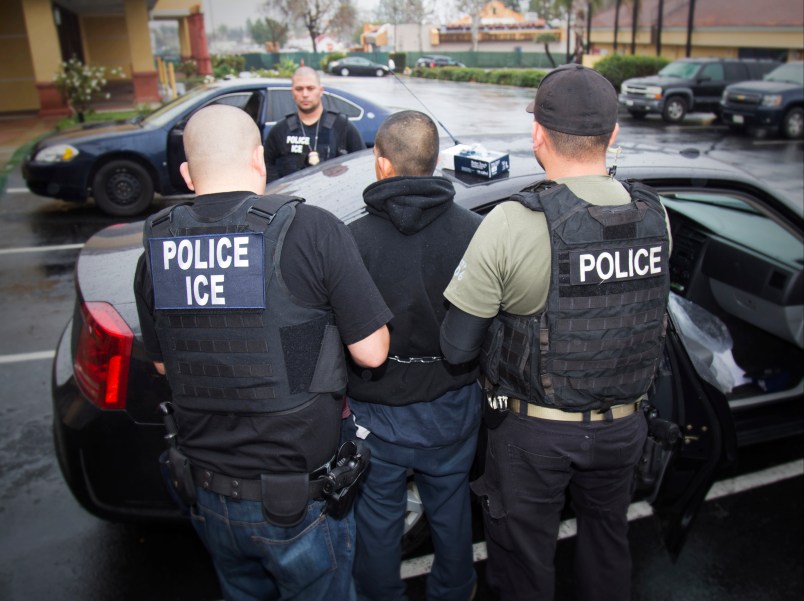Immigrations and Customs Enforcement will temporarily cease its weekly publication of name-and-shame reports of localities that do not comply with its detainer requests, following complaints that the reports were inaccurate and misrepresented local laws and policies.
The New York Times first reported the temporary suspension of ICE’s Declined Detainer Outcome Reports on Monday.
The reports list jurisdictions that ICE says have refused — or have policies that state they will refuse — the agency’s requests to detain alleged undocumented immigrants after they would have otherwise been released from custody.
A spokesperson for the agency, Sarah Rodriguez, confirmed the suspension to TPM and said in a statement that “ICE remains committed to publishing the most accurate information available regarding declined detainers across the country and continues to analyze and refine its reporting methodologies.”
“The DDOR has already sparked important conversations between ICE and law enforcement agencies across the nation, and the revised report will add to this discussion,” she added.
The reports included examples of “notable criminal activity” from allegedly undocumented people who had not been detained on ICE’s behalf, though many crimes listed were charges rather than convictions.
In a FAQ section on the reports, ICE says that the term refers to “egregious charges and convictions of the alien for whom a detainer was not honored.”
Elsewhere in the FAQ, the subjects of detainer requests are referred to alternatively as removable aliens, criminal aliens and “individuals whom ICE has probable cause to suspect are removable aliens.” However, the ACLU and others have argued (and several courts have ruled) that, often, ICE has not had the probable cause necessary ask localities to continue to hold the subjects of detainers in custody.
Many localities expressed surprise and anger at being included on ICE’s list.
Nisha Agarwal, commissioner of the New York City Mayor’s Office for Immigrant Affairs, told the Times that the city cooperated with ICE detainers for people who had committed a violent crime or were on a terrorism watch list, but not those who had been convicted of minor crimes, or whose charges had been dropped.
After the first weekly report was released, on March 21, ICE and the Department of Homeland Security did not respond to TPM’s questions about how the lists of declined detainers and uncooperative localities were compiled, nor what specifically constituted “notable criminal activity.”
They also later released a lengthy correction to their first report, which acknowledged mistaking several localities for “similarly named locations,” and blaming localities for declining detainers for arrestees that were not actually in their custody.
The reports came as the result of the same executive order that will eventually require quarterly reports listing crimes committed by undocumented immigrants, which President Donald Trump highlighted in his address to a joint session of Congress in February.







Right…because ‘shaming’ is SUCH an effective business model to foster cooperation. This must be more of that ‘corporation crap’ instead of running like a government.
More caving? Guess they got tired of “winning.”
“A spokesperson for the agency, Sarah Rodriguez”
sigh…
Sure, fine, that’s probably a bit of overgeneralization and what-not on my part, but still, WTF.
I’m thinking she’s more like the person who is handed a piece of paper by someone who makes these decisions when somebody starts asking questions. She has the authority to say “We’re looking into it” or “We’re not at liberty to say.”
Speaking of criminals and thugs…
Look, I’m just a middle-aged, white guy in a green sweater and red tie… I’ve never had any ICE interaction except at the airport, so I don’t have a lot of personal experience here. But are ICE ever in the news for a good reason? I can’t recall a single time Ive heard something positive reported. Just sayin’.